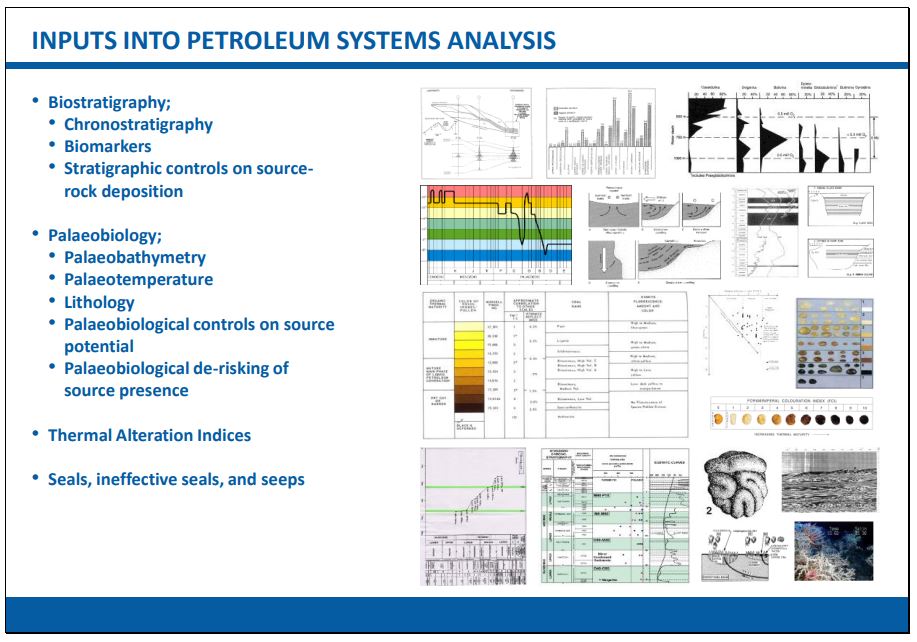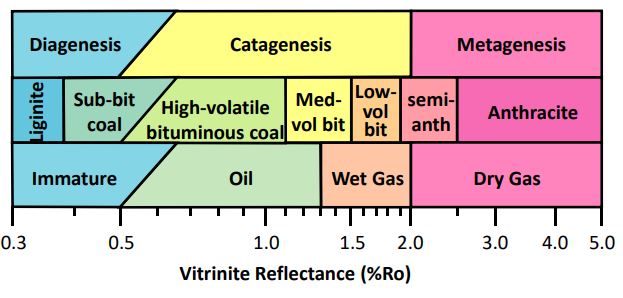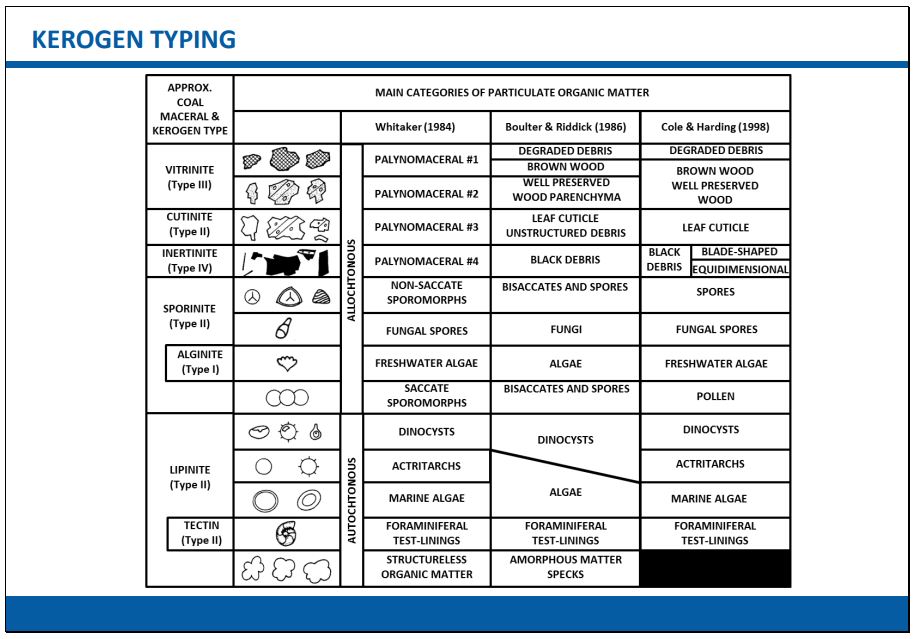Table of Contents
Thermal Maturity Studies: Source Rocks and Kerogen Types
Source Rocks and Organic Maturity
Petroleum Systems Analysis is the phase in basin screening and exploration where it is determined if all the necessary elements are in place to generate and trap hydrocarbons. These include elements such as the presence of a source-rock, a reservoir, a trap and a seal but also include quantitative assessments including how much hydrocarbons could be generated from the source rock under different degrees of maturity and whether there are suitable migration routes to allow the hydrocarbons to get from the source rocks and into the reservoir/trap. Does the reservoir comprise rock units that are of suitable porosity and permeability to store commercial quantities of hydrocarbons (and subsequently allow to be released when drilled) and is there a coherent, non-porous and non-permeable seal which is intact (i.e. unfractured)?
Microfossils cannot directly inform us of the latter features of a Petroleum System but they can give us insights - some quantitative - into the source-rocks and hydrocarbon-generative aspects of a Petroleum System.

Inputs into Petroleum Systems Analysis.
Most source-rocks are marine in origin although coals and certain lacustrine sediments can also be very organic rich. Some of the world's most prolific source-rocks (grouped by age) are listed below:
- Silurian (9%); Qusaiba and correlatives, Middle East (also North Africa) - accounts for all Palaeozoic-reservoired oil and gas in Middle East (?1000tcf of gas in North Dome/South Pars alone).
- Late Devonian-Early Carboniferous (8%); Awaynat Wanin C, North Africa (also Domanik, Timan-Pechora and Woodbend, Alberta)
- Late Carboniferous-Early Permian (8%)
- Late Jurassic (25%); Diyab, Naokelekan, Middle East – accounts for all Jurassic-reservoired oil and gas in Middle East (>100 billion barrels of oil in Ghawar Field) +Kimmeridge Clay Formation/Draupne in the North Sea
- Mid Cretaceous (29%); La Luna-Querecual-Naparima Hill, Eastern Venezuelan Basin - accounts for all oil in Faja Petrolifera del Orinoco (1.3 trillion barrels); Kazhdumi, Iran – accounts for all Cretaceous- and some Oligo-Miocene- reservoired oil in the Iranian Zagros
- Palaeocene-Eocene; Pabdeh, Iran – accounts for some Oligo-Miocene- reservoired oil in the Iranian Zagros
- Oligocene-Holocene (13%); Maykop, Eastern Paratethys - accounts for much of oil and gas in South Caspian (Miocene Diatom Suite also a contributor)



